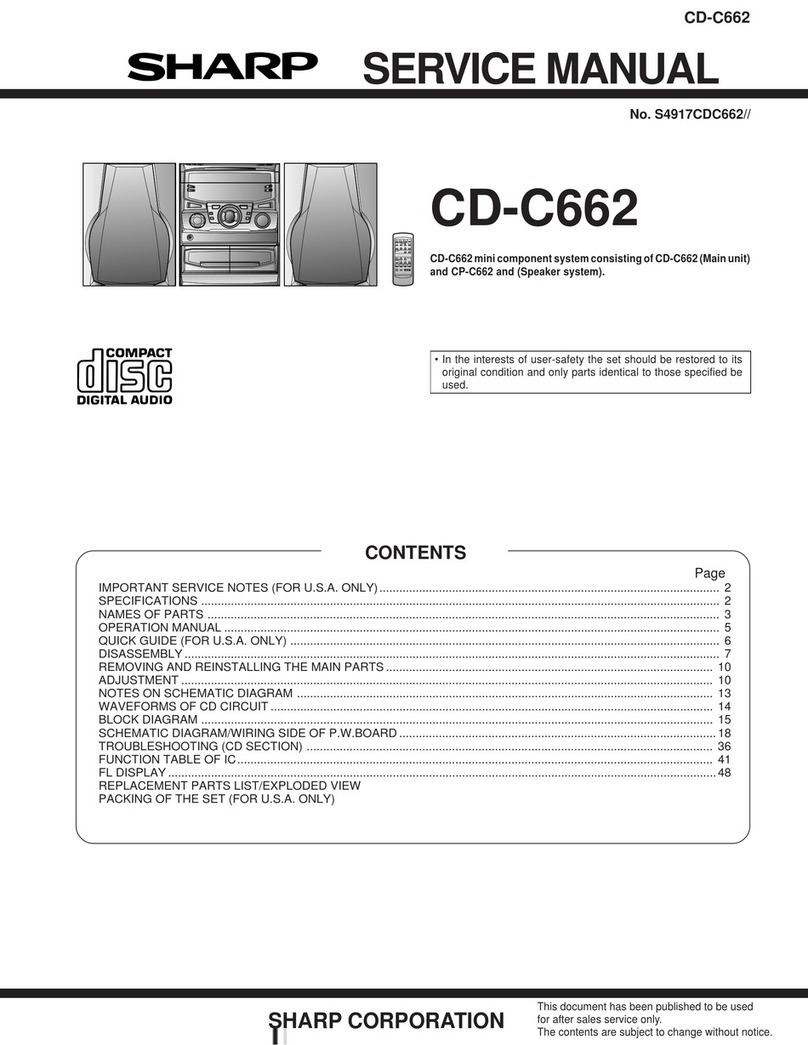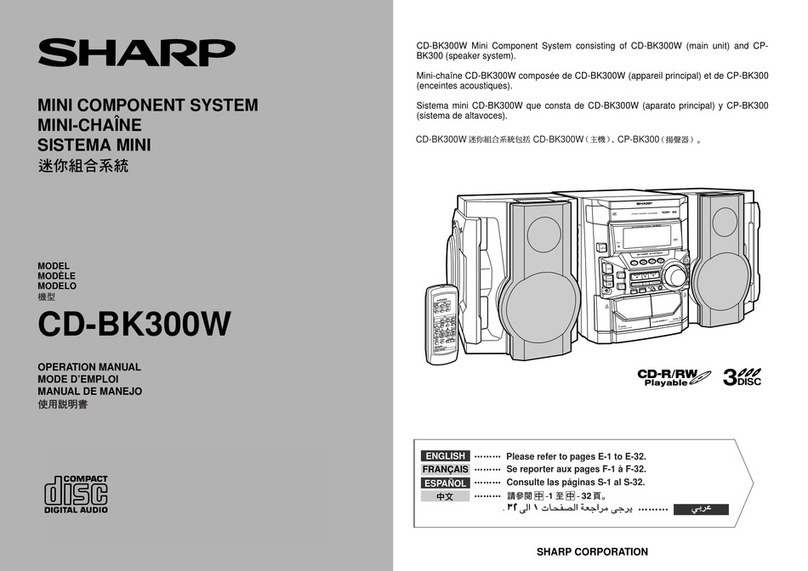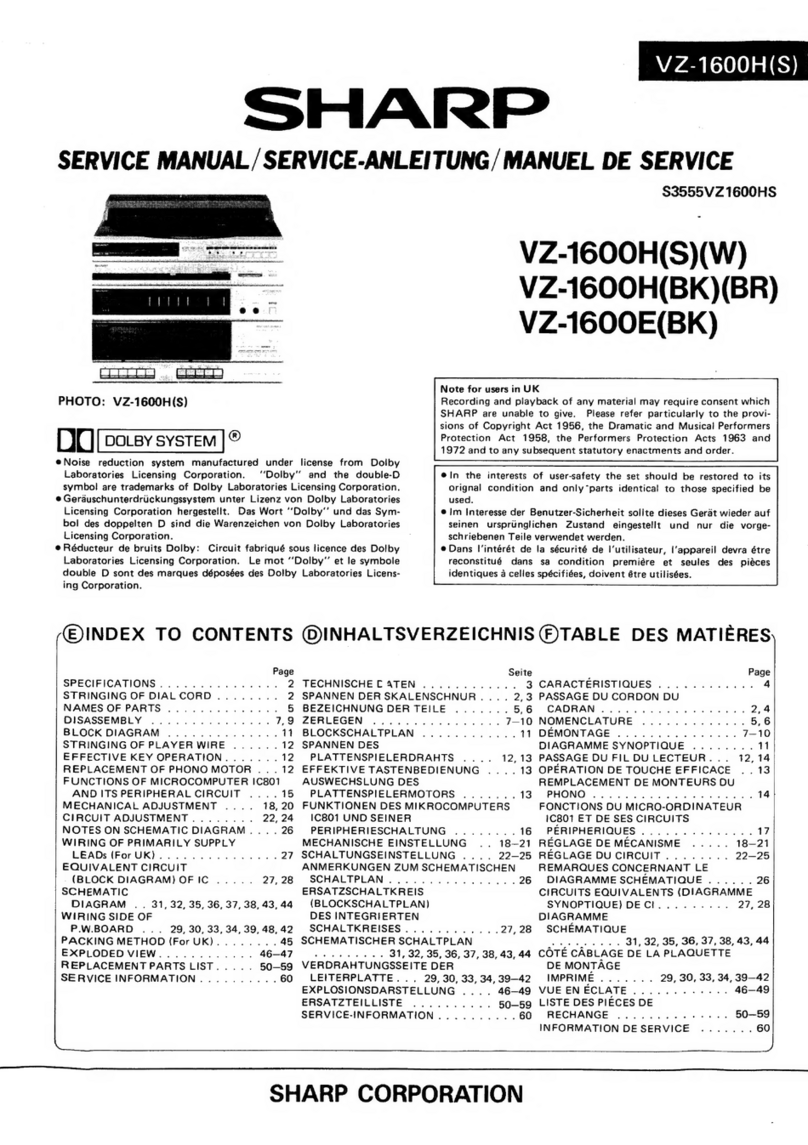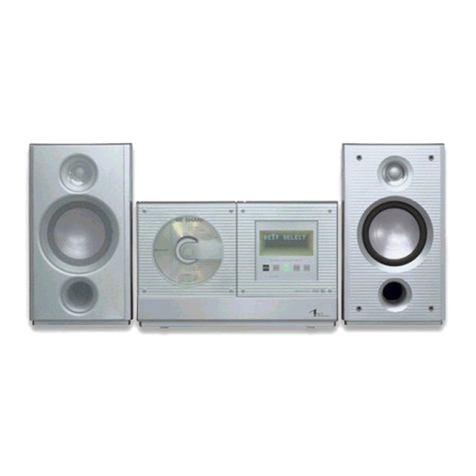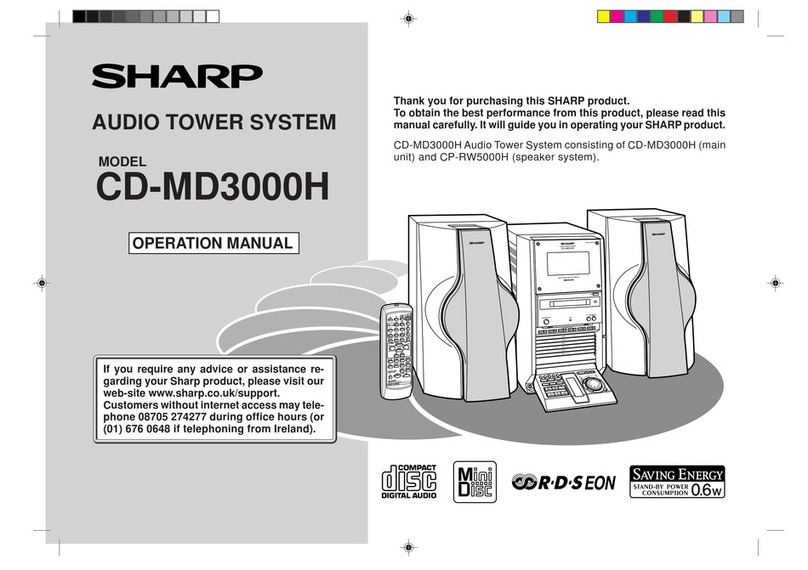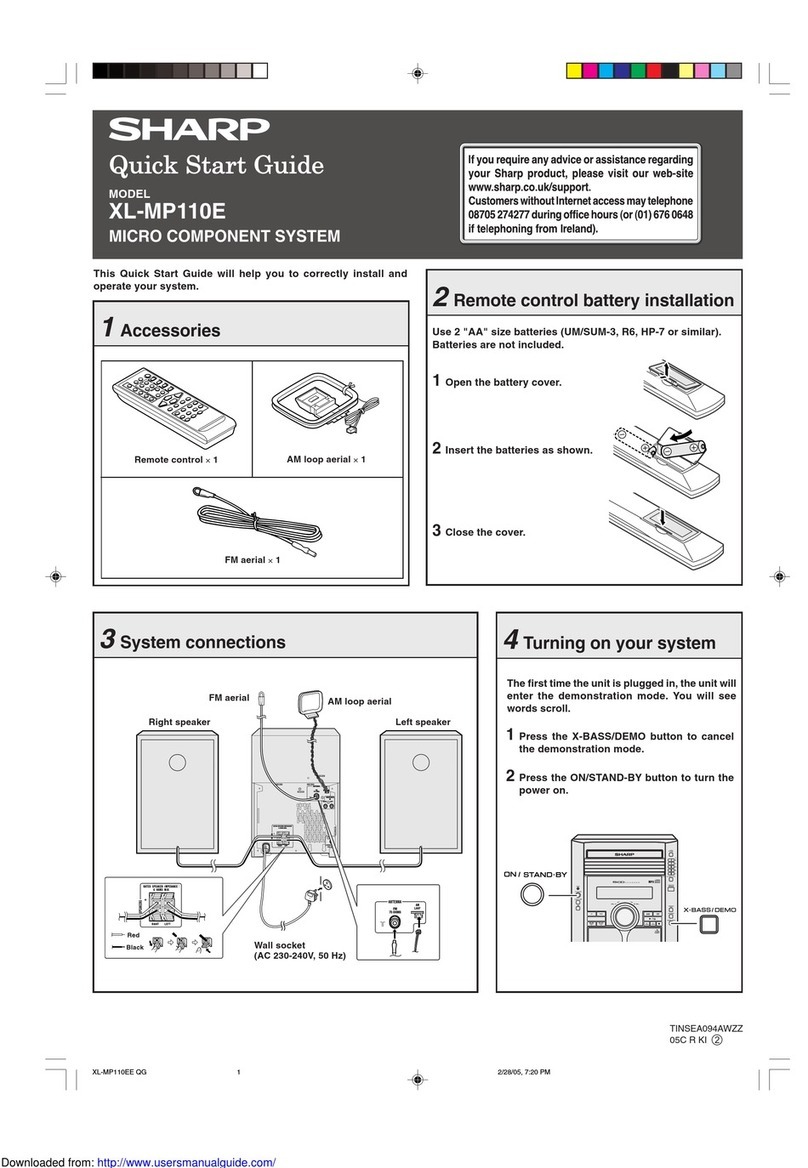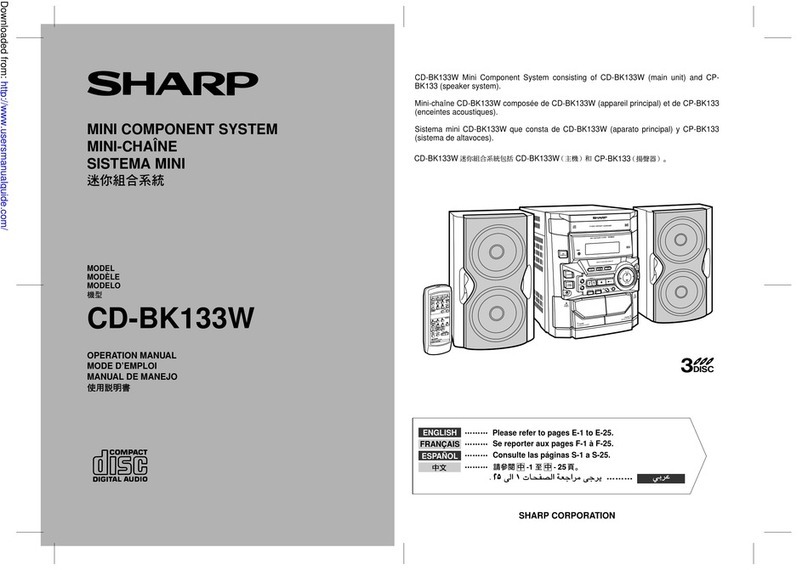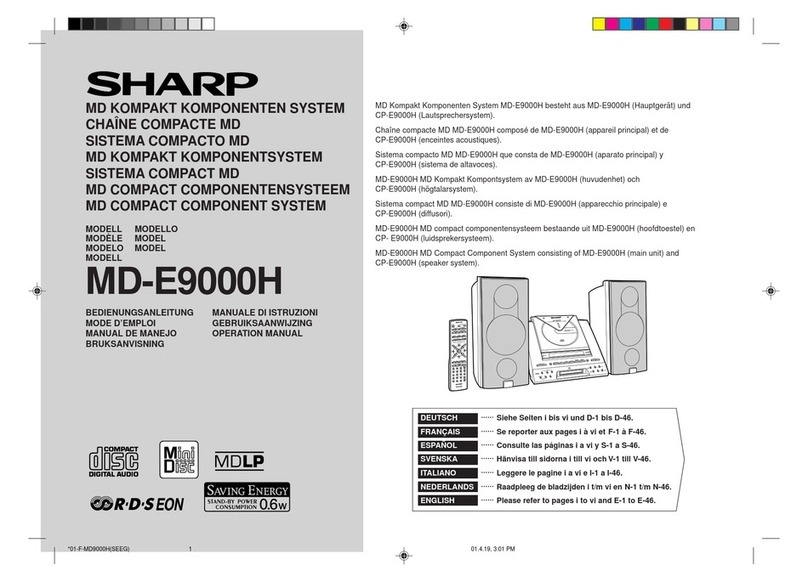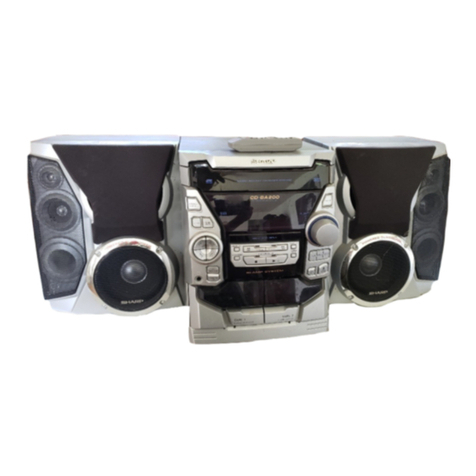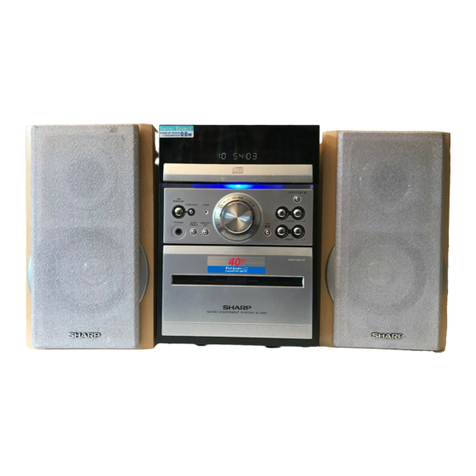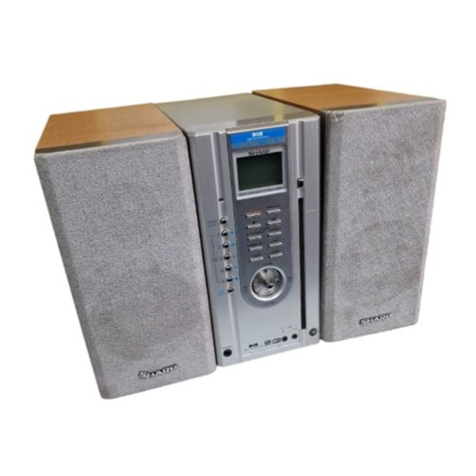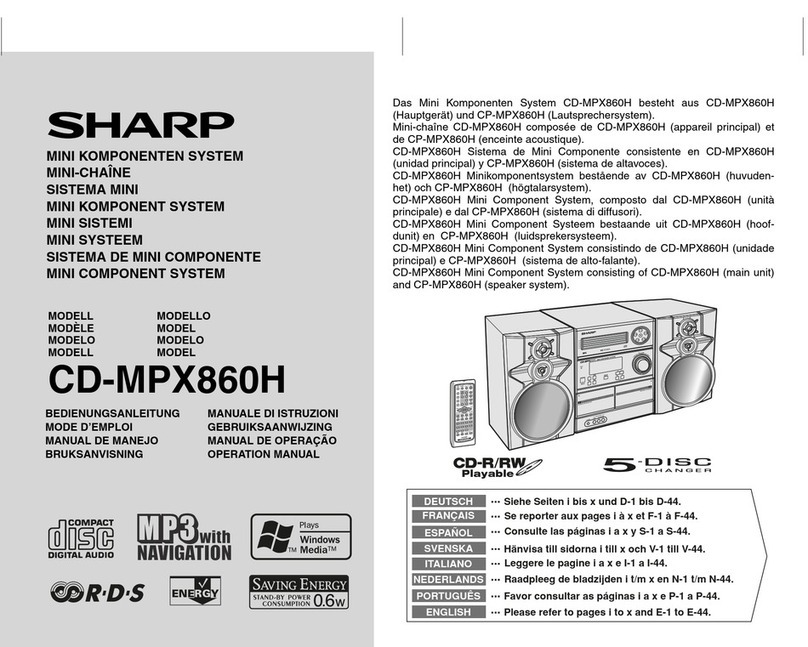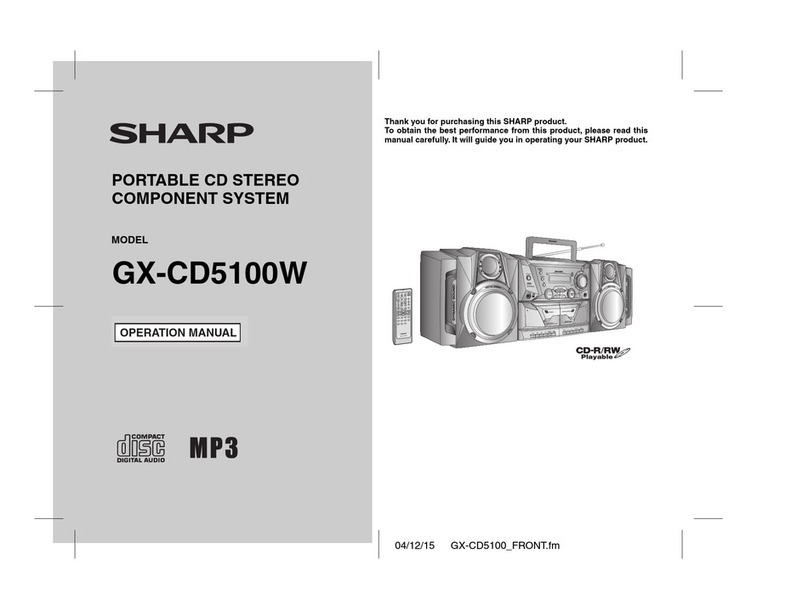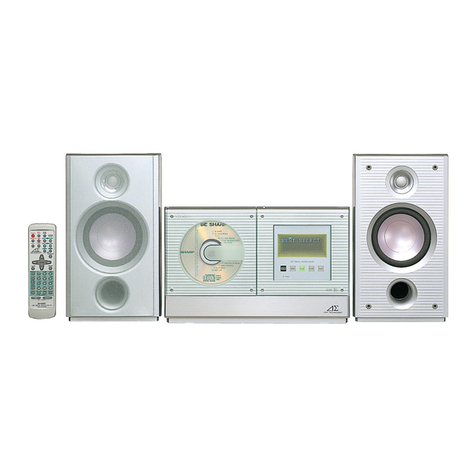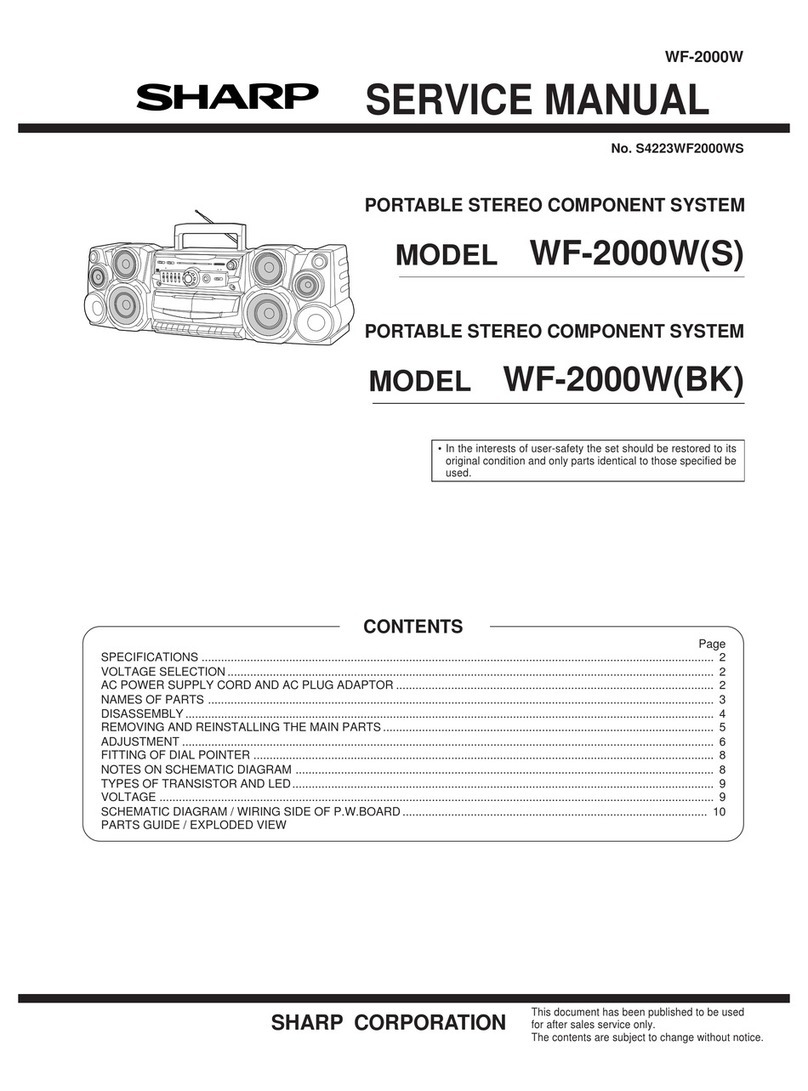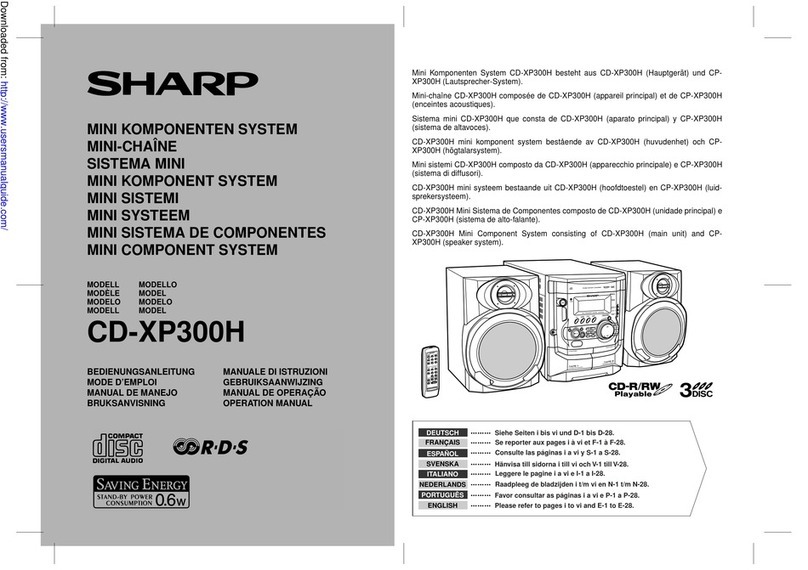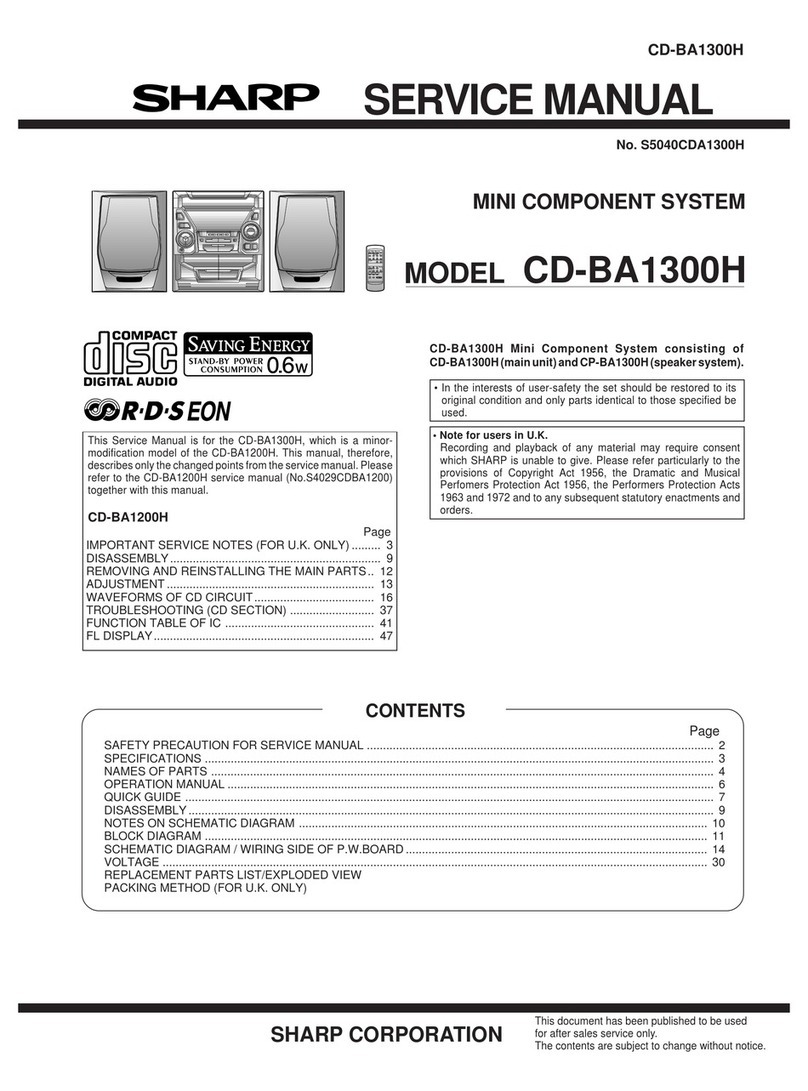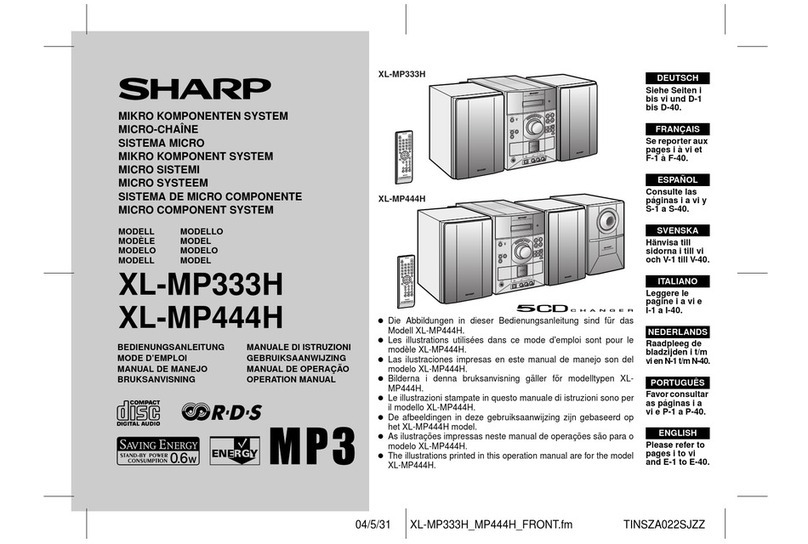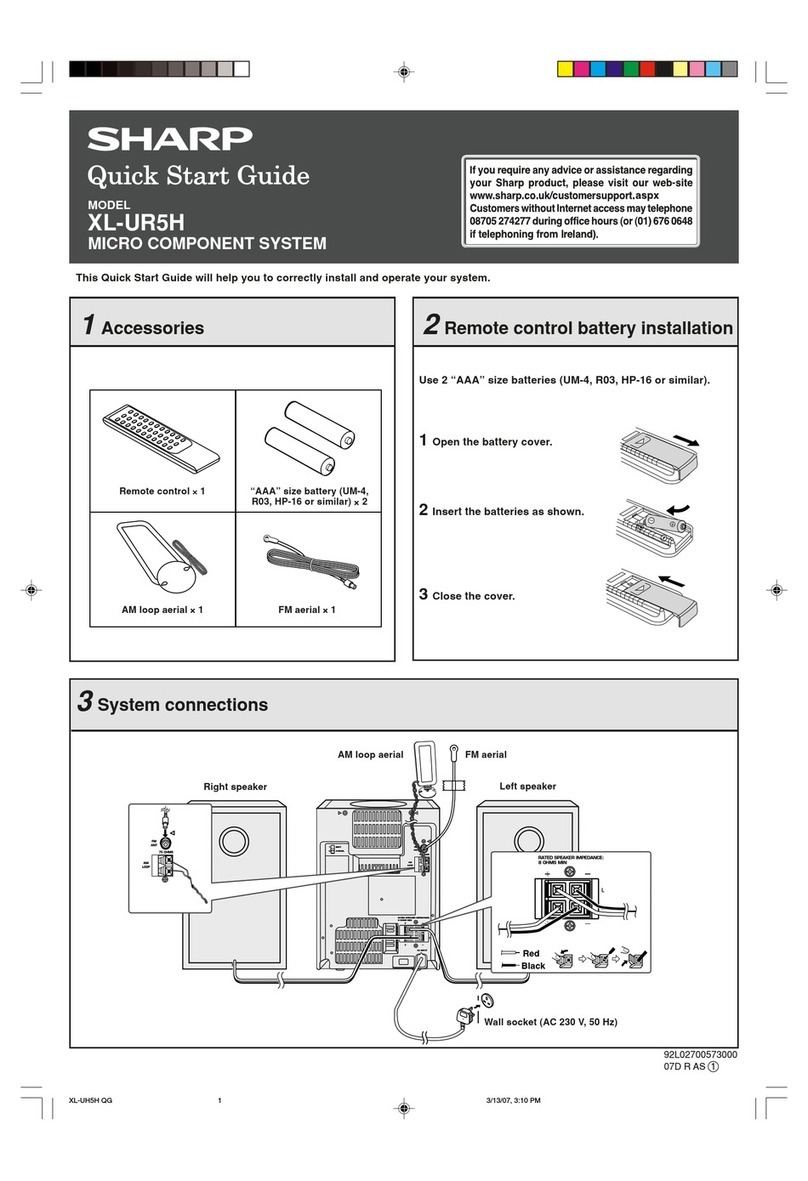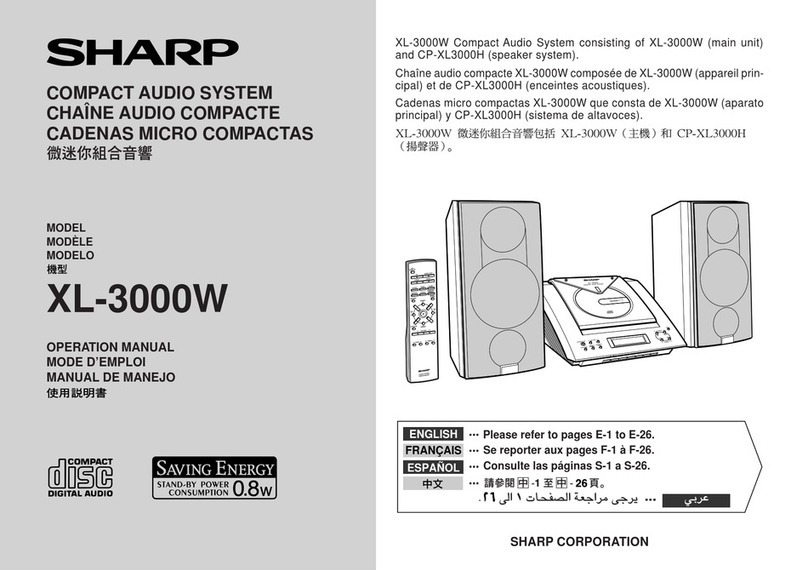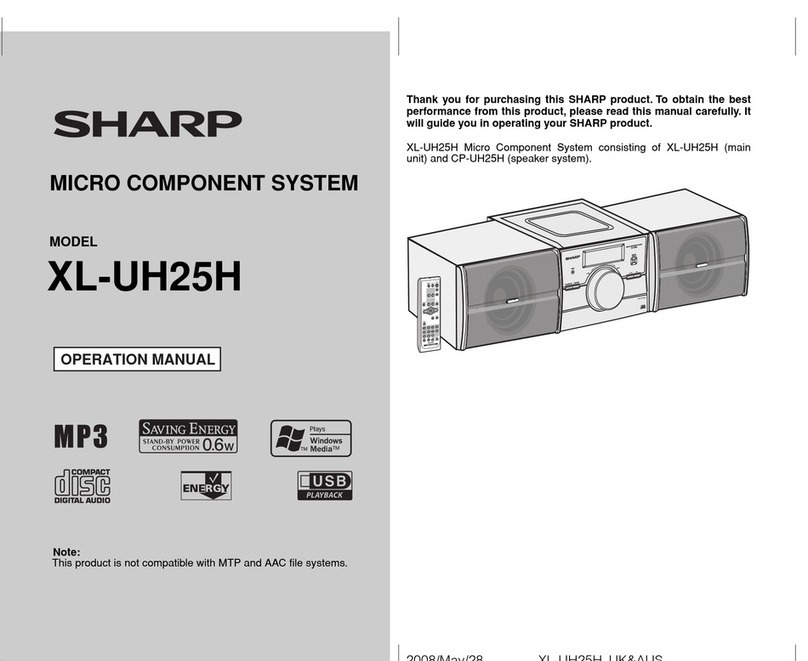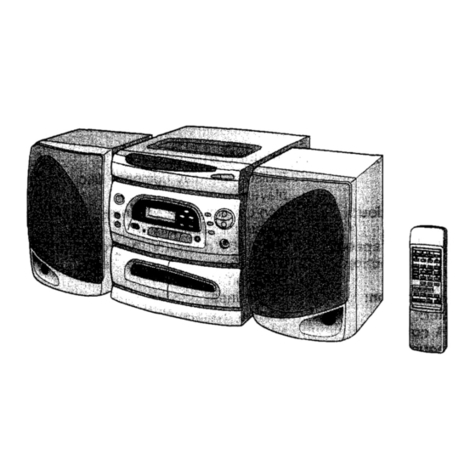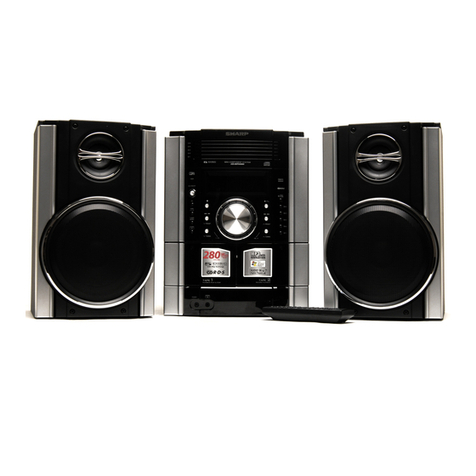
XL-55H/65H
– 10 –
2. CD Test Mode (TEST 1)
In the CD test mode the operation of each step is enabled even when the LID-SW is off. However, if focus cannot be set in step 3
or any error processing is started, it is impossible to proceed to the next step. When the error processing is started, operations other
thanterminationoftestmodebypressingtheON/STAND-BYbuttonorreturntothestep1bypressingtheSTOPbuttonareinhibited.
1. Step 1 Mode
When the CD test mode is turned on, the following indication lights, the processing (until turning-off of CD STB terminal of CD
initialization operation flow) is executed, and the next button input is waited.
After lighting for one second
If the following operation buttons are pressed in this state, the operation is performed as follows.
"ON/STAND-BY"......The test mode is turned off, the power is turned off, and the ordinary stand-by mode is set.
"FF/FWD".................After the pickup returns once to the innermost periphery, it slides toward the outer periphery while this
button is held down.
"REW/REV"..............After the pickup returns once to the innermost periphery, it slides toward the inner periphery while this
button is pressed. However, if PU-IN is on, input is invalid.
"PLAY" .....................Shift to step 2
"STOP".....................Invalid
"REC PAUSE"..........Shift to step 5
TEST MODE
The test mode applied to this microcomputer has three modes, namely ordinary test mode to be used for adjustment or
measurement, aging test mode to be used for aging test, and self-diagnosis test mode for self-inspection in case of final product
inspection.
1. Turning on the test mode
Toturnonthespecifictestmode,presstheON/STAND-BYbutton,holdingdownthefollowingtwobuttonsintheordinarystand-
bymode (power offstate).Inthiscaseonlythemainunit button isvalid.EvenwhentheON/STAND-BYofremotecontrol button
is set to on, the test mode is not turned on.
[Ordinary test mode]
1. CD Test Mode (TEST 1)…………………… BASS/TREBLE + FF/FWD
2. Tuner Test Mode (TEST 2)………………… BASS/TREBLE + REW/REV
3. Electronic volume Test Mode (TEST 3)……BASS/TREBLE + REC
4. Timer Test Mode (TEST 4)………………… MEMORY/SET + REC
5. LCD Test Mode (TEST 5)……………………MEMORY/SET + REW/REV
MEMORY/SET + PLAY
[Self-diagnosis Test Mode]
1. Button input diagnosis test mode (TEST6).…
• Setting the Test Mode
Keeping the REW/REV button and BASS/TREBLE button
pressed, turn on POWER. Then, the frequency is initially set
in the memory as shown in Table. Call it with the PRESET
button to use it for adjustment and check of tuner circuit.
Preset No. FM STEREO Preset No. AM
1 87.50 MHz
2 108.00 MHz
3 98.00 MHz
4 90.00 MHz
5 106.00 MHz
11~25 ––––
6 531 kHz
7 1,602 kHz
8 990 kHz
9 603 kHz
10 1,404 kHz
Preset No. FM MONO
26 106.00 MHz
27 90.00 MHz
28 98.00 MHz
29 108.00 MHz
30 87.50 MHz
